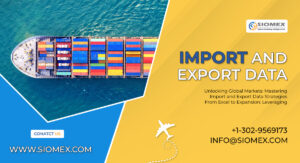
What Is a Shipment Tracking System?
In an increasingly globalized economy, the efficient movement of goods is vital for businesses of all sizes. Shipment tracking software and systems play a crucial role in logistics and supply chain management by providing visibility into the movement of packages from the point of origin to the destination. Understanding what a shipment tracking system is and how it works can greatly enhance a business’s operational efficiency and customer satisfaction.
Defining Shipment Tracking System
A shipment tracking system is a technology solution that enables businesses and customers to monitor the movement of packages during transit. These systems utilize various technologies, such as GPS, barcodes, and RFID (Radio Frequency Identification), to track shipments in real time. This visibility helps businesses keep customers informed about the status of their deliveries and manage logistics more effectively.
Key Features of Shipment Tracking Systems
Real-Time Tracking: Shipment tracking systems provide real-time updates on the location of a package. This allows businesses to know where their shipments are at any given moment and communicate this information to customers.
Notifications and Alerts: Many systems send notifications or alerts via email or SMS to customers and businesses regarding important milestones, such as when a package is out for delivery or has been delivered. This keeps all parties informed throughout the shipping process.
Integration with Other Systems: Shipment tracking systems often integrate with other logistics and supply chain management software. This allows businesses to manage inventory, process orders, and track shipments within a single platform.
User-Friendly Interface: Most modern shipment tracking systems come with an intuitive interface that allows users to easily access shipment information. This improves usability for both customers and logistics personnel.
Reporting and Analytics: Advanced tracking systems provide analytics and reporting features that help businesses analyze shipment performance. This data can be used to identify trends, improve delivery processes, and enhance overall logistics strategy.
Benefits of Using a Shipment Tracking System
- Enhanced Visibility: The primary benefit of a shipment tracking system is the enhanced visibility it offers. Businesses can monitor shipments in real-time, leading to better decision-making and resource allocation.
- Improved Customer Satisfaction: Customers appreciate being kept informed about their shipments. Providing them with real-time updates can enhance their overall experience and foster brand loyalty.
- Reduced Operational Costs: By optimizing the shipping process and reducing the chances of delays, shipment tracking systems can help businesses save on operational costs associated with missed deliveries or mismanaged inventory.
- Increased Efficiency: With better visibility and control over the shipping process, logistics teams can respond more quickly to issues, manage resources more effectively, and streamline operations.
- Data-Driven Decisions: The analytics features of shipment tracking systems allow businesses to gain insights into their shipping processes, enabling them to make informed decisions that improve efficiency and reduce costs.
How Do Courier Shipment Tracking Software Work?
Courier shipment tracking software is specifically designed to track the movement of packages within courier services. These systems leverage a combination of technologies to provide seamless tracking and management of shipments. Here’s how they typically work:
Order Entry
When a shipment is initiated, details are entered into the courier’s system. This includes information such as sender and recipient addresses, package dimensions, weight, and shipping method. This initial data is crucial for generating a tracking number.
Tracking Number Generation
Once the shipment is created, a unique tracking number is generated. This number serves as the identifier for that specific shipment throughout its journey. Customers can use this number to access real-time tracking information.
Package Scanning
Throughout the shipping process, packages are scanned at various points, such as when they are picked up, during transit, and upon delivery. Scanning devices (like barcode scanners or RFID readers) record the location and status of the shipment at each stage.
Data Transmission
As packages are scanned, the data is transmitted to the central tracking system in real-time. This information is then updated in the system, providing businesses and customers with accurate location details.
User Access
Customers can access the shipment tracking software and system via a web portal or mobile app. By entering their unique tracking number, they can view the current status and location of their shipment. The interface typically includes a map view and detailed status updates.
Notifications and Alerts
The software can send automated notifications to customers and businesses regarding the status of their shipments. This includes alerts about package dispatch, out-for-delivery status, and successful delivery.
Reporting and Analytics
Courier shipment tracking software often includes analytics features that provide insights into delivery performance, such as average delivery times, delays, and customer feedback. This data can be used to optimize delivery routes and improve customer service.
Conclusion
Shipment tracking systems and courier tracking software are essential tools in the modern logistics landscape. They enhance visibility, improve customer satisfaction, and optimize operations for businesses involved in shipment tracking software and delivery. By understanding how these systems work and their benefits, businesses can leverage them to streamline their shipping processes and foster better relationships with customers. In an era where customer expectations are higher than ever, having an efficient tracking system is not just an option—it’s a necessity for success in the competitive shipping industry. For more information click here.







